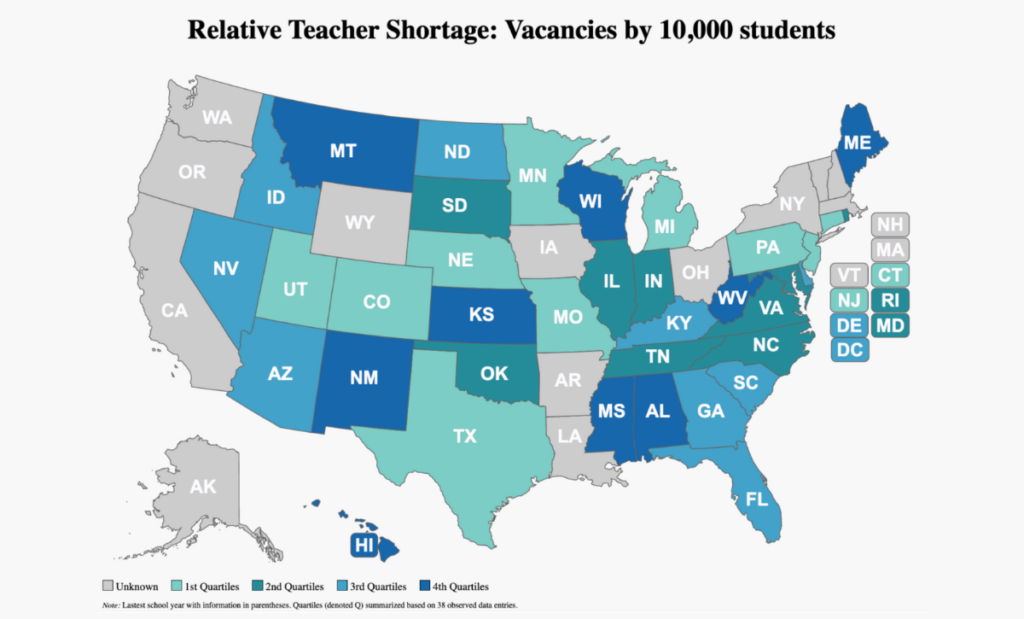More on the teacher shortage debate
Teacher shortages are hardly new, but recently it has been described as a national problem. Is it? Given that there is no real national consensus on how to define a teacher shortage, and that national data on teacher vacancies can be hard to come by, it’s a tricky narrative to navigate.
Scholaroo, an organization that helps students find scholarships, decided to illustrate the deficit by comparing the number of teachers in each state to the state population.
North Dakota is faring the best, with 13.13 teachers per 1,000 population. Minnesota comes in at #34, just below Wisconsin, with 9.41 teachers per 1,000 population. Florida’s teacher-population ratio with 6.54 teachers per 1,000 population is the lowest in the country.
This doesn’t neatly answer the teacher shortage question, though, for a number of reasons. As The Economist aptly asked: “A school may have enough teachers for each pupil, but is it experiencing a teacher shortage if it cannot find one for a new music course?”
If an administrator is teaching one class, is that a shortage or is the administrator simply doing her job? Is a district in trouble if it is unable to staff 3% of its positions? How about 1%?
According to the Professional Educator Licensing and Standards Board’s (PELSB) most recent biennial report on supply and demand of teachers in Minnesota, 101 unfilled positions were reported during the 2019-2020 academic year due to lack of qualified applicants. (Some districts may have had more than one unfilled position.)
Since this raw vacancy count doesn’t account for the number of students in the state, an analysis by three education researchers from Kansas State University and the University of Illinois Urbana-Champaign put Minnesota’s teacher vacancy relative to student population, or around 1.13 vacancies per 10,000 students.
The analysis by Tuan Nguyen, Chanh Lam, and Paul Bruno also examined the number of underqualified hires in the state, given that teacher shortages can also be reported by the number of teachers hired without being fully certified. For Minnesota, this came out to 50.44 underqualified hires per 10,000 students, making it one of the 11 states where underqualified hires are the highest. (We will see how COVID-19 impacted these numbers in PELSB’s 2023 report.)
Based on Nguyen, Lam, and Bruno’s nationwide analysis, vacancy estimates are significantly lower than the 300,000 reported by the national teachers’ union (the National Education Association), wrote The 74.
“The teacher supply pipeline seems to be stagnating or decreasing over time,” Nguyen told The 74. “Over the last 10 years or so there has been a substantial drop in the number of teacher candidates.”
With the recent approval of new controversial teacher licensure rules, it will be interesting to see if those changes further impact the number of aspiring educators and the applicant pool.
